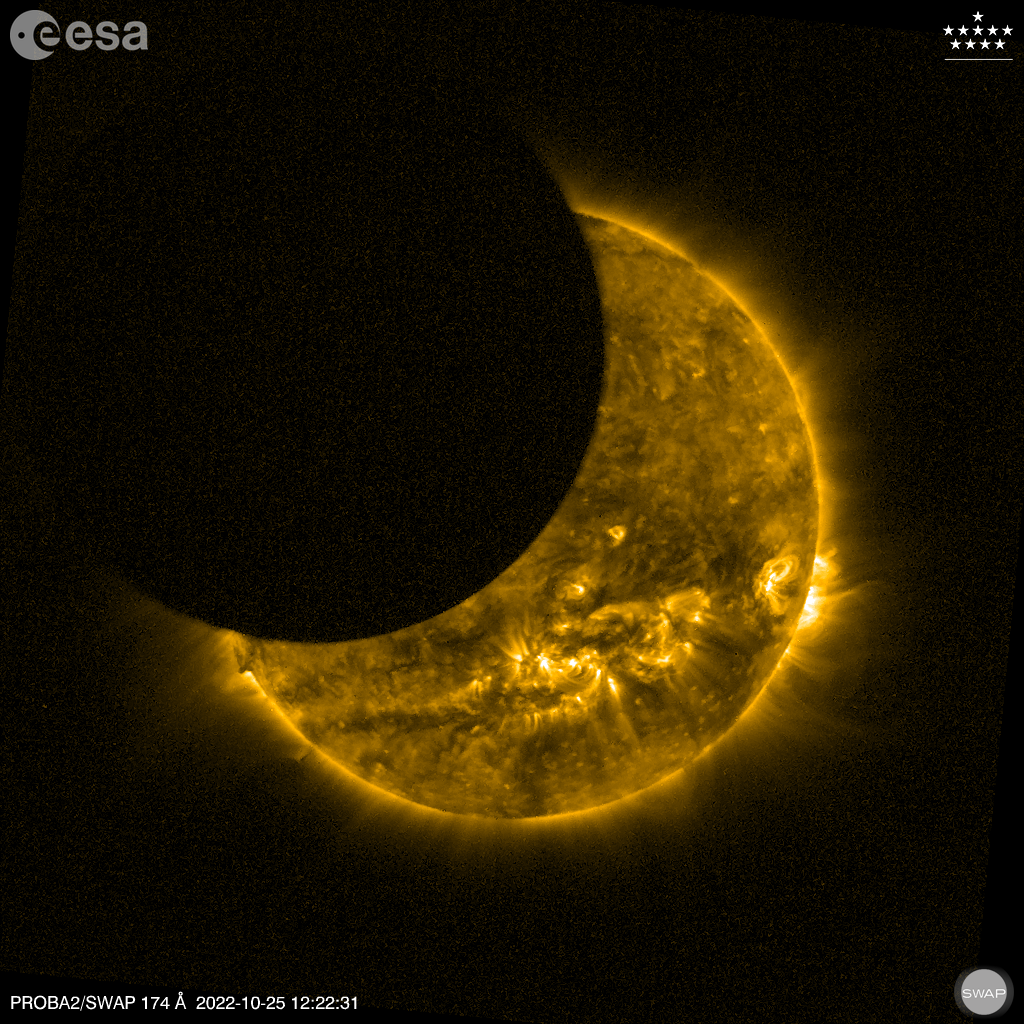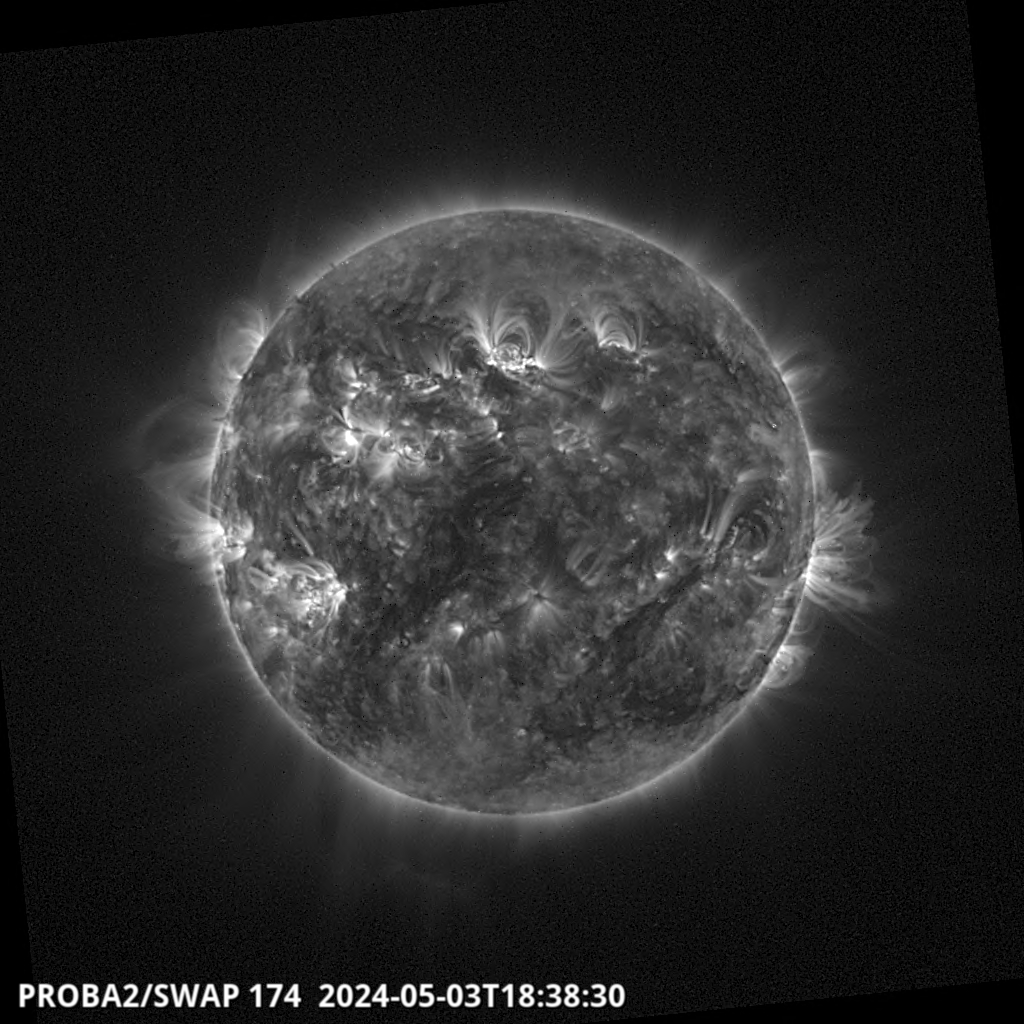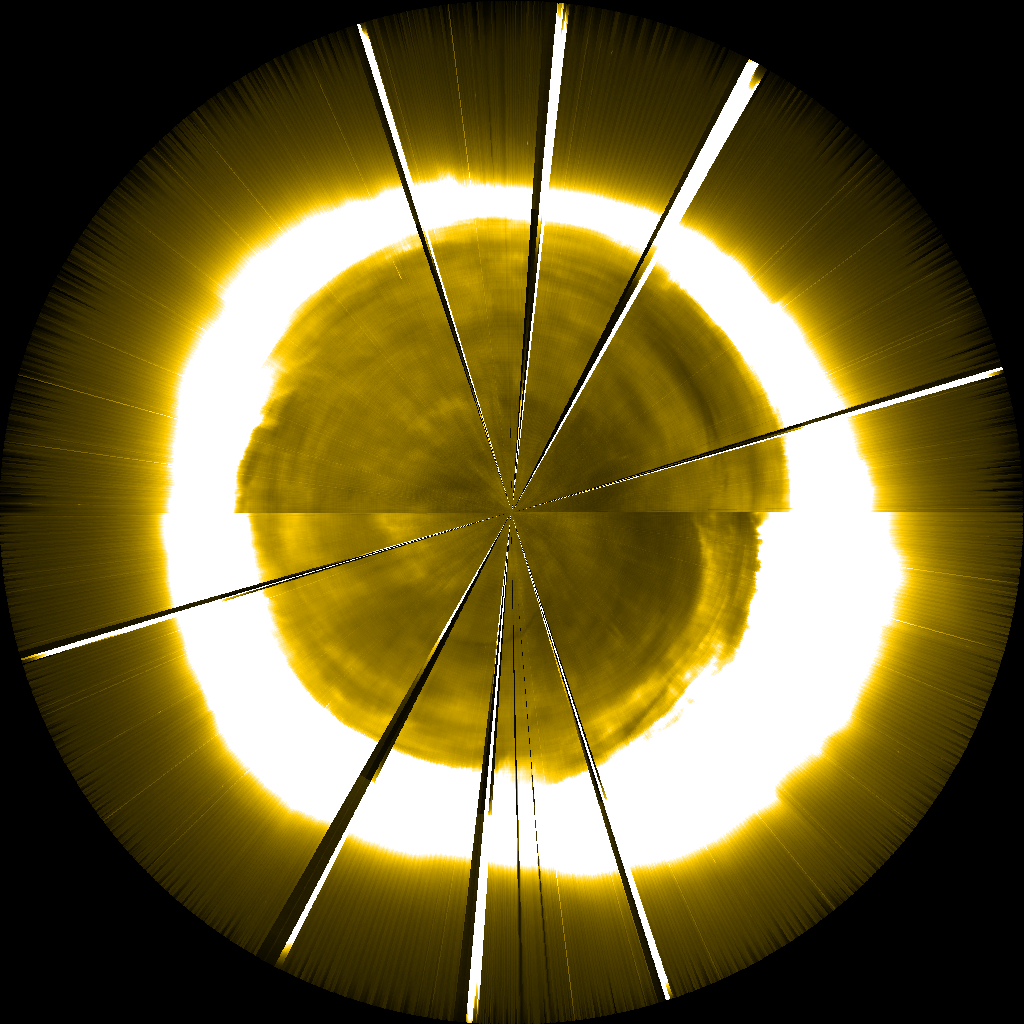Main menu
You are here
Solar eclipse on October 25, 2022
 The second solar eclipse of the year has occurred! On October 25 the Moon passed in front of the Sun once more. This was a special eclipse to us, as it was visible as a partial eclipse from PROBA2’s home country, Belgium. In Uccle, where the PROBA2 Science Center is located, the eclipse was observed between 11:10 and 13:00 local time, and its maximum took place at 12:04 LT (UTC + 2 h). At that moment, in Brussels, about 30% of the solar diameter was covered by the Moon, which corresponds to about 19% of the solar surface.
The second solar eclipse of the year has occurred! On October 25 the Moon passed in front of the Sun once more. This was a special eclipse to us, as it was visible as a partial eclipse from PROBA2’s home country, Belgium. In Uccle, where the PROBA2 Science Center is located, the eclipse was observed between 11:10 and 13:00 local time, and its maximum took place at 12:04 LT (UTC + 2 h). At that moment, in Brussels, about 30% of the solar diameter was covered by the Moon, which corresponds to about 19% of the solar surface.
This event was also a special treat for all solar and space weather enthousiasts that were at that time gathered at the European Space Weather Week. This year the conference takes place in Zagreb, Croatia. Of course, a live eclipse viewing session was organized during lunch time for all participants and in the evening a public lecture on solar eclipses, featuring PROBA2 observations, was given by our STCE colleague Petra Vanlommel. PROBA2 observations of the eclipse were also shown off at the conference fair the next day.
Click on the simulation below to see the movie of the SWAP observations. As PROBA2 orbits the Earth rapidly, SWAP has an ever-changing view of the eclipse. The Moon appears three times in SWAP’s field-of-view. During its first passage it only covers the upper left corner of the image and is thus difficult to distinguish in real images against the black background. The second traverse is cut short in the observations because, unfortunately, SWAP and LYRA experience an occultation just then. This means that the instruments are observing the Sun through the Earth’s atmosphere. For SWAP it is wasteful to make images at this time since the EUV light that its detector is sensitive to, is absorbed by the Earth’s atmosphere. However, occultations do present an excellent opportunity for LYRA to extract O+N2 number density profiles from its measurements. Finally, the third Moon crossing was completely observed by SWAP and LYRA.
LYRA observations


SWAP observations
Data Use Policy
Contacting the PROBA2 Team










